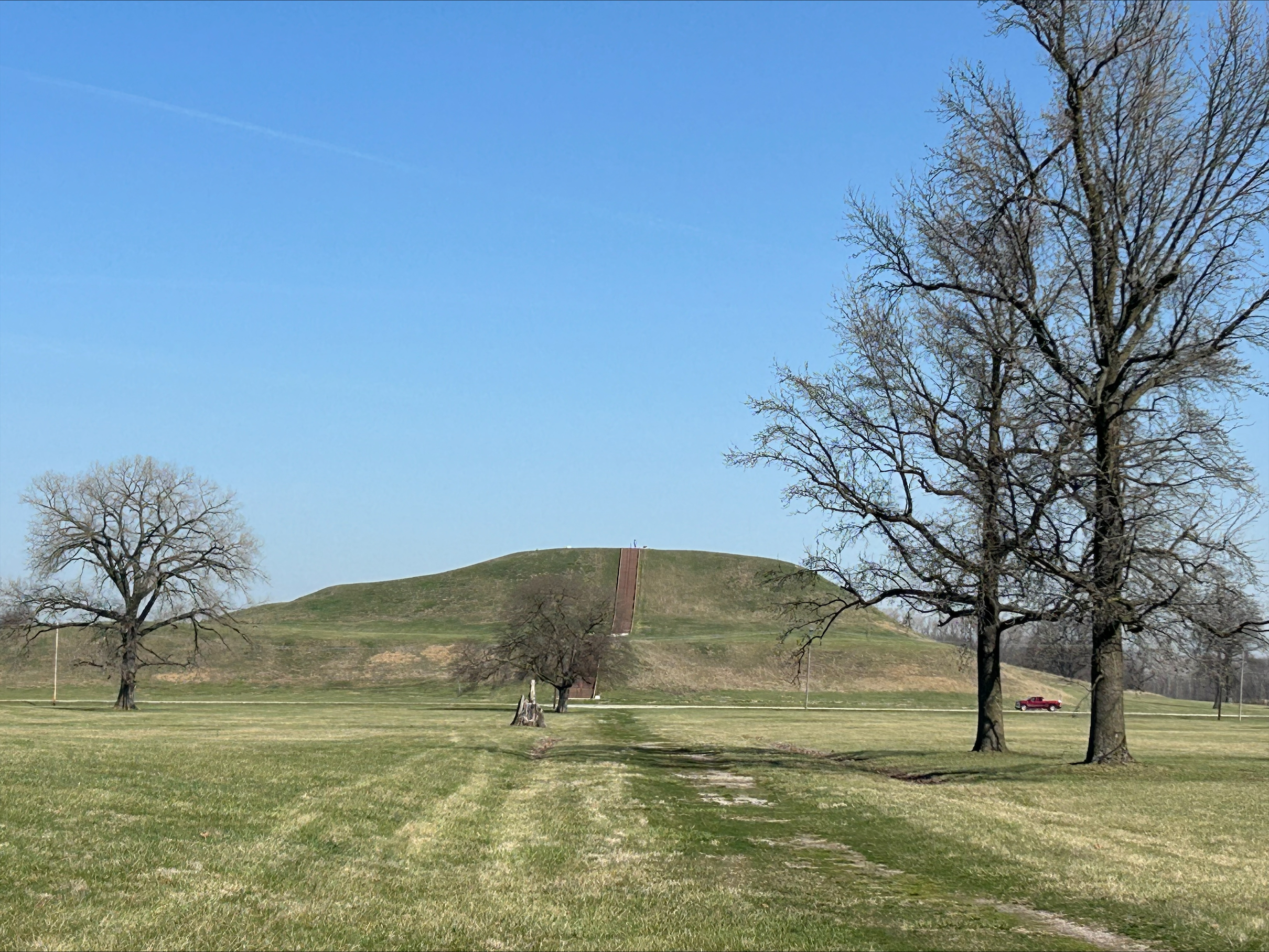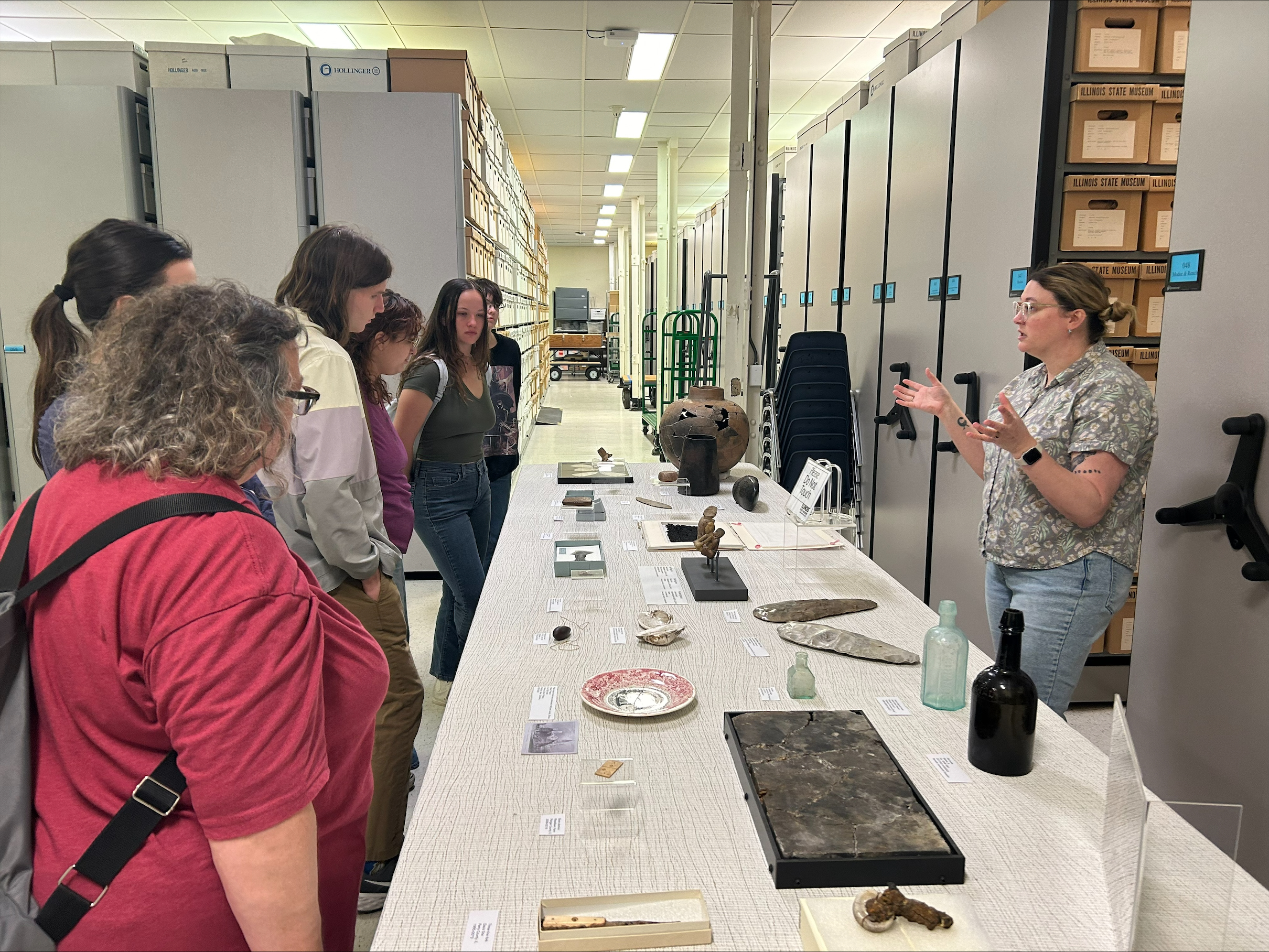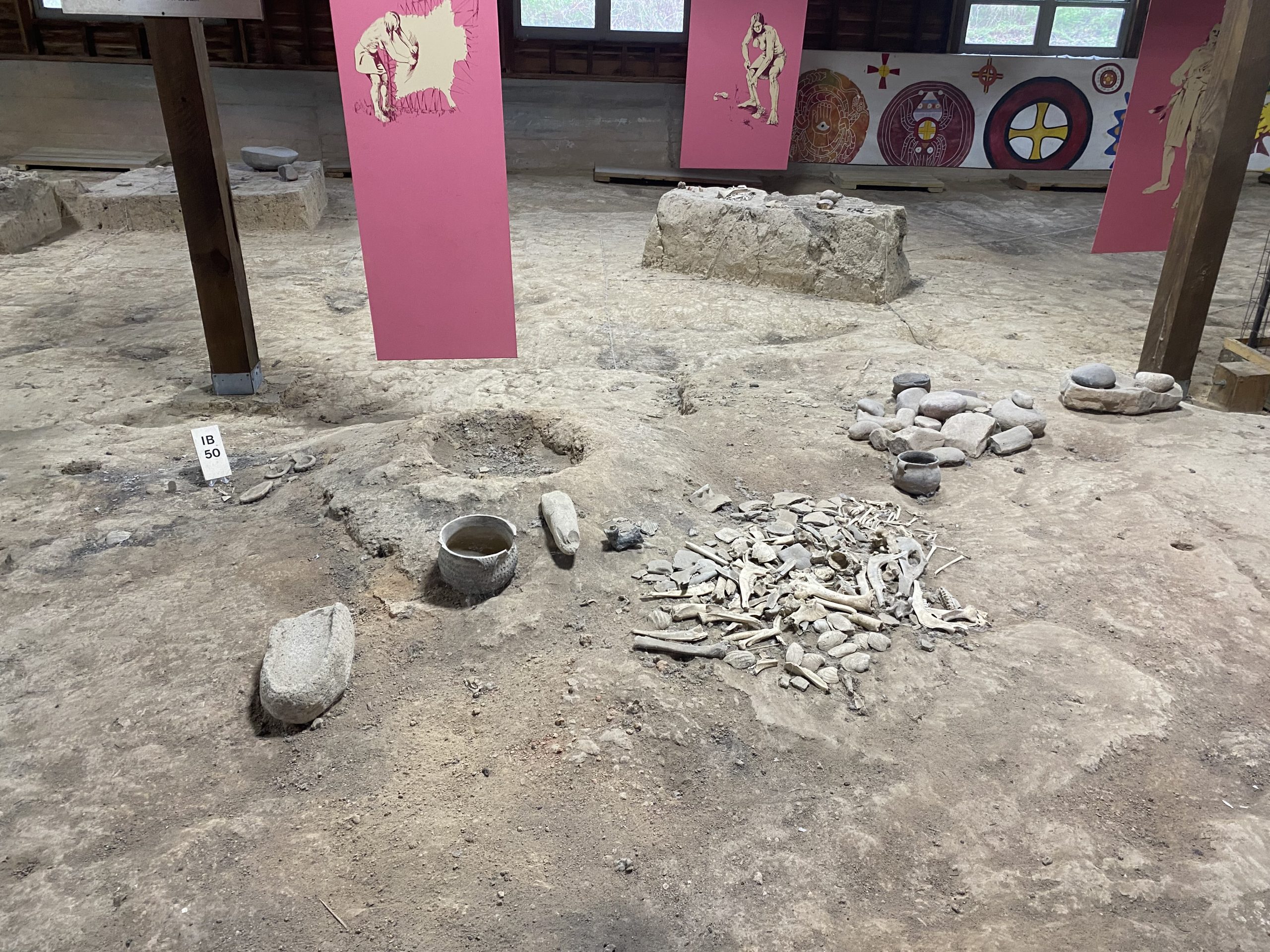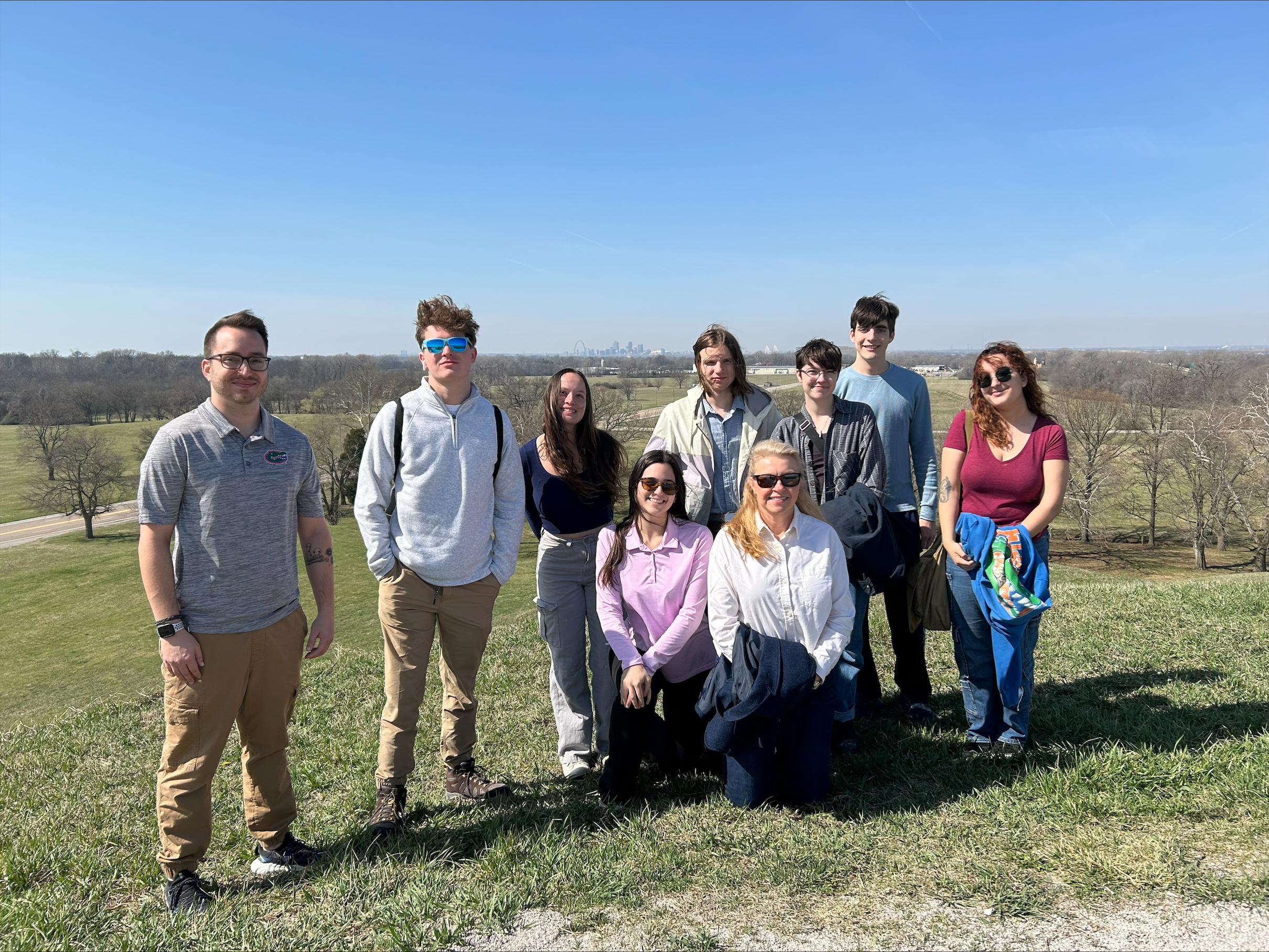
A view of Monk's Mound standing in the plaza at Cahokia State Historic Site. Monk's Mound is the largest Pre-Columbian earthwork in the Americas with a base about the same size as the Great Pyramid of Giza.
UF Honors course heightens awareness of indigenous culture
The Midwest is rich with indigenous history, and University of Florida students are exploring this archeology and culture firsthand in the honors course “Past Indigenous Cities of the Midcontinent.”
Guided by doctoral candidate and Department of Anthropology Adjunct Lecturer Anthony P. Farace, this inaugural course offers an immersive, in-person look at archaeological sites and museums outside of Florida. Inspired to blend academic study with hands-on learning, Farace partnered with the UF Honors Program to create an (Un)Common Classrooms course based in his hometown of St. Louis, Missouri.
And students in the course have been stepping out of their textbooks into real-life explorations. Farace recalls students’ amazement upon arriving at Cahokia Mounds – a United Nations Educational, Scientific and Cultural Organization (UNESCO) World Heritage Site in Illinois, just outside St. Louis.
“It’s so much cooler in person,” said Camila Cuevas-Moreno, an animal sciences major at UF who aspires to become a veterinarian. “You just can’t compare it to anything else. It’s amazing how much has been able to be preserved.”
Honoring history
Learning about preservation is a key component of the course, which brings awareness to the implications of new regulations in the Native American Graves Protection and Repatriation Act (NAGPRA). While federal law has protected Native American artifacts since 1990, an amendment to NAGPRA, which came into effect in January, requires museums and federal agencies to defer to tribal authorities in matters related to the treatment of Native American human remains and other items removed from federal or tribal lands.
Cahokia Mounds, one of the largest archaeological sites in the United States, preserves what remains of 4,000 acres of land that was home to nearly 20,000 individuals at its peak. The National Historic Landmark features 72 of the surviving 80 earthen mounds used for burials and ceremonies during this pre-Columbian age. A tour with site superintendent Lori Belknap included climbing the 30-meter-high Monks Mound, which offers a panoramic view of the site’s strategic layout.
The course additionally called for a visit to Dickson Mounds, a branch of the Illinois State Museum, which is listed on the National Register of Historic Places. There, the group confronted the challenges of preserving an indigenous heritage amidst modern changes. The museum, constructed atop burial mounds in the 1950s, has recently gained media attention.

“It was difficult when I realized that some of the mounds we were visiting were disturbed burial mounds. I thought about them in terms of my ancestors and what that might feel like,” said UF anthropology major Kecia Strock.
To rectify past mistakes, the museum has initiated collaborations with local tribes to repatriate indigenous burial items that were previously displayed, demonstrating a commitment to addressing human rights concerns.
“Coming from a culture where burial and ancestral connections aren’t very important, it took me some time to fully grasp why burial artifacts were such an integral part of Native American culture and why it may not be appropriate to display them,” said Jonathan Nunes, a UF mathematics and classics double major.

Lessons from the past
At Wickliffe Mounds in Kentucky, near the confluence of the Ohio and Mississippi Rivers, students participated in atlatl throwing, pottery making, and flintknapping. These interactive demonstrations not only heightened students’ appreciation for indigenous craftsmanship but also showcased the resilience of ancient cultures that are facing environmental challenges.
However, the visit to Wickliffe Mounds was a “sobering” experience, according to Strock, “when discussing the burials that had been on display for years and how, thanks to NAGPRA, they had been repatriated and, in some cases, reinterred onsite with a private burial ceremony.”
This experience showed the students how indigenous cultures have been directly affected by the new NAGPRA regulations, which mandate consultation with indigenous tribes regarding museum exhibitions and the repatriation of artifacts.
“When I built the course, I didn’t anticipate the new NAGPRA regulations would go into effect right before it started,” Farace said. “We were able to discuss with museum curators and site managers how they were adapting to the new guidelines, including collaborating on exhibitions that incorporated indigenous views and interpretations of the past – important topics that have seen major headlines in the U.S.”
Studying concepts like NAGPRA emphasized cultural relativism – an essential skill for professionals in any field. Farace valued the diverse perspectives of students in majors like math, business, animal sciences, and anthropology. The course highlighted interdisciplinary learning, and students gained professional insights from museum curators.
“The Illinois State Museum Research and Collections Center was one of my favorites because the head curator gave our group a tour of the collections, discussing the logistics of her job,” Nunes said.
Cuevas-Moreno noted the connection between veterinary medicine and anthropology, particularly linking forensic veterinary work with archaeology to understand animal diseases and mortality related to human-animal connections. She found that skills such as effective communication and teamwork are essential in both fields, especially during fieldwork.
“It was just fascinating to see all these students of different majors and backgrounds come together to understand the importance of prioritizing Native American history and values,” said UF public health major Jinelle Vazquez.
Looking toward the future
Farace stressed the importance of acknowledging local, community-based history, which is often overshadowed by industrial development. Fortunately, NAGPRA and the National Historic Preservation Act help protect archaeological resources on federally-funded projects through measures like surveying – a skill taught in the new Graduate Certificate in Public Archaeology in the MA in Anthropology program at UF.
“I think it is important for people to acknowledge the fact that there is a lot of history underneath their feet,” Farace said.
While many North Americans may be disconnected from their history, Native Americans maintain a strong ancestral connection to the land. Recognizing and preserving this history is crucial, especially in an age of increasing global interconnectedness and development.

“This course gave me a greater understanding of the size of contemporary Native American tribes, their voice in American politics, and their history,” Nunes said. “Now I can more confidently speak about Native American archaeology and the political issues around protecting it.”
Farace hopes students will use this multicultural perspective to foster inclusivity in their future careers.
To learn more about student experiences in the “Past Indigenous Cities of the Midcontinent” course, visit the students’ photo blog Instagram page here. For more information on the new Graduate Certificate in Public Archaeology, click here.


